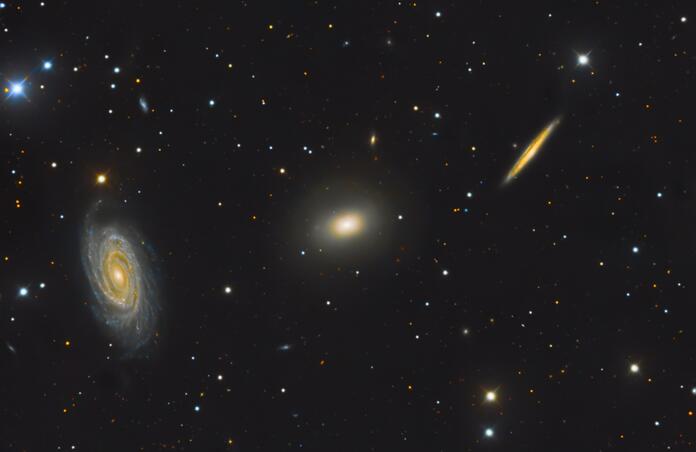Dithering Explained

Every image we process has some level of noise in it from various sources. One of the sources of noise in our images comes from the variation in pixel strength and sensitivity between the locations of the individual pixels on the image sensor. This is defined as spatial noise because it creates spatial variation in the image. This type of noise is Photoresponse Non-Uniformity (PRNU). This type of noise disproportional to the amount of light the pixel receives and could be the result of defects in the sensor chip (bad silicon, a misaligned microlens, etc.). On average, this type of noise varies between pixels but the variation is usually less than 1%. Pixels also have variation in the thermal signal and their response to it. This is called Fixed Pattern Noise (FPN). Both of these sources of noise combined to create Pattern Noise in our images.
Pattern noise is most noticeable as banding artifacts in your image. We use flat frames to correct the noise associated with PRNU. For Fixed Pattern Noise (FPN), we use a technique called Dithering. When we dither our sub exposures, we just shift where the telescope is pointing between sub exposures by a few pixels creating a small offset between images. When the images are aligned in pre processing, the fixed pattern noise is misaligned, randomizing the positions of the fixed pattern noise and eliminating much of the impact when you integrate the sub exposures.
This is an important step that needs to be taken that will undoubtedly improve the quality of your sub exposures and the overall image. Guiding software such as PHD2 and image capture software such as Sequence Generator Pro have easy automatic methods to institute dithering during image capture.
Clear skies...
Astro Image Credits:
NGC 5982 (https://app.telescope.live/click-grab/all?target=ngc 5982); Telescope Live 1-Click Observation Data, Processed using PixInsight by Reggie Jones
References:
The Deep-Sky Imaging Primer, 3rd Edition; Charles Bracken, Copyright 2022
